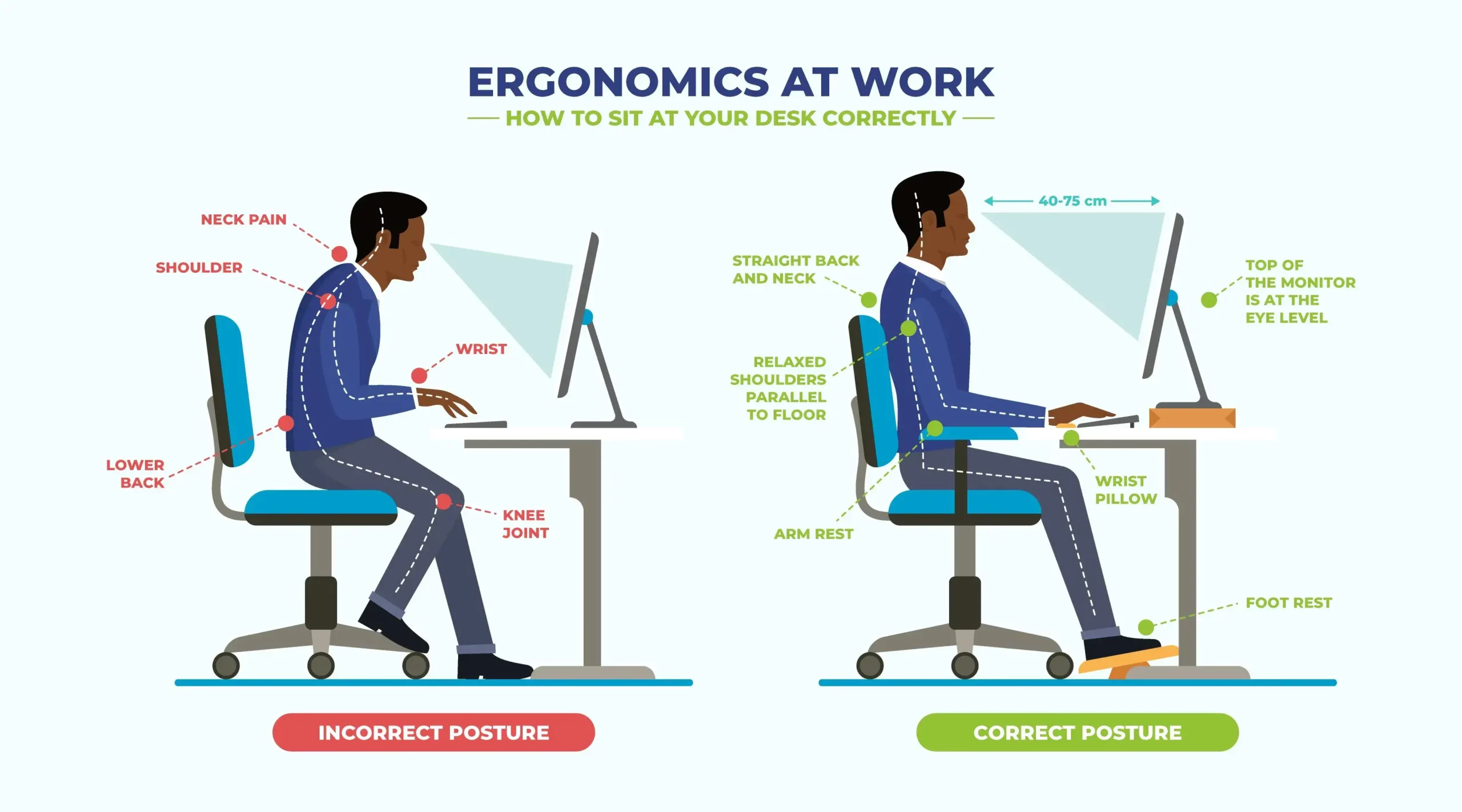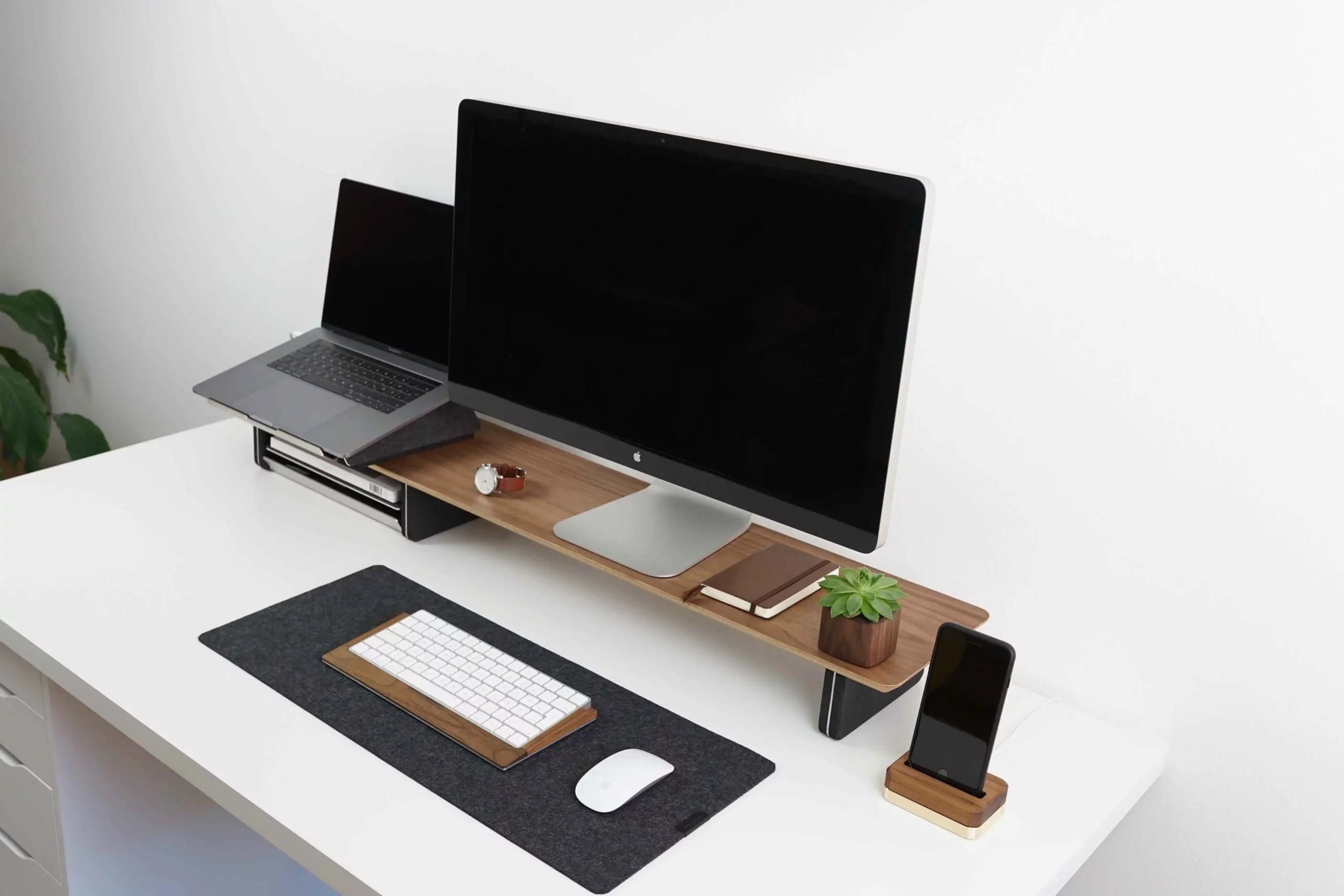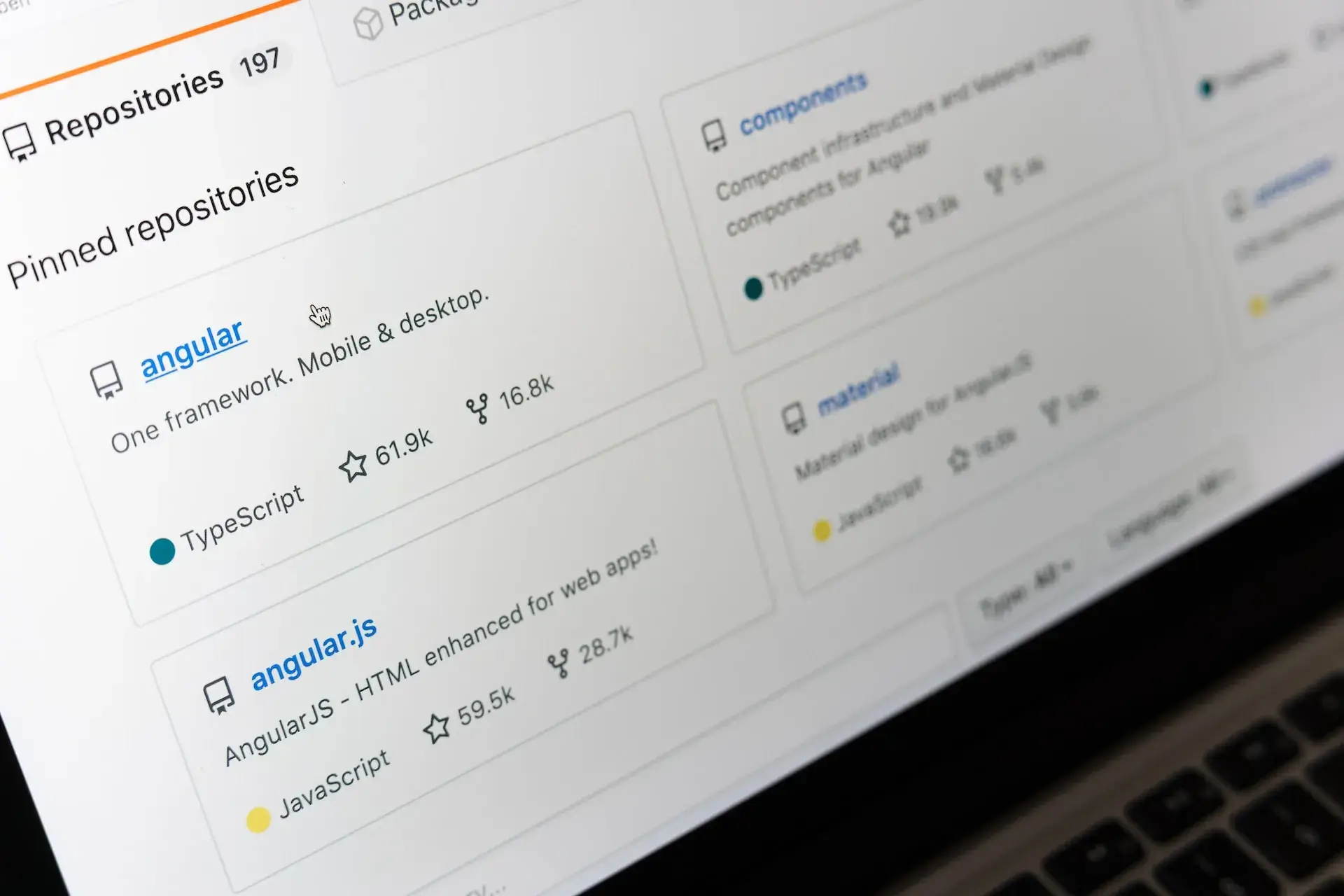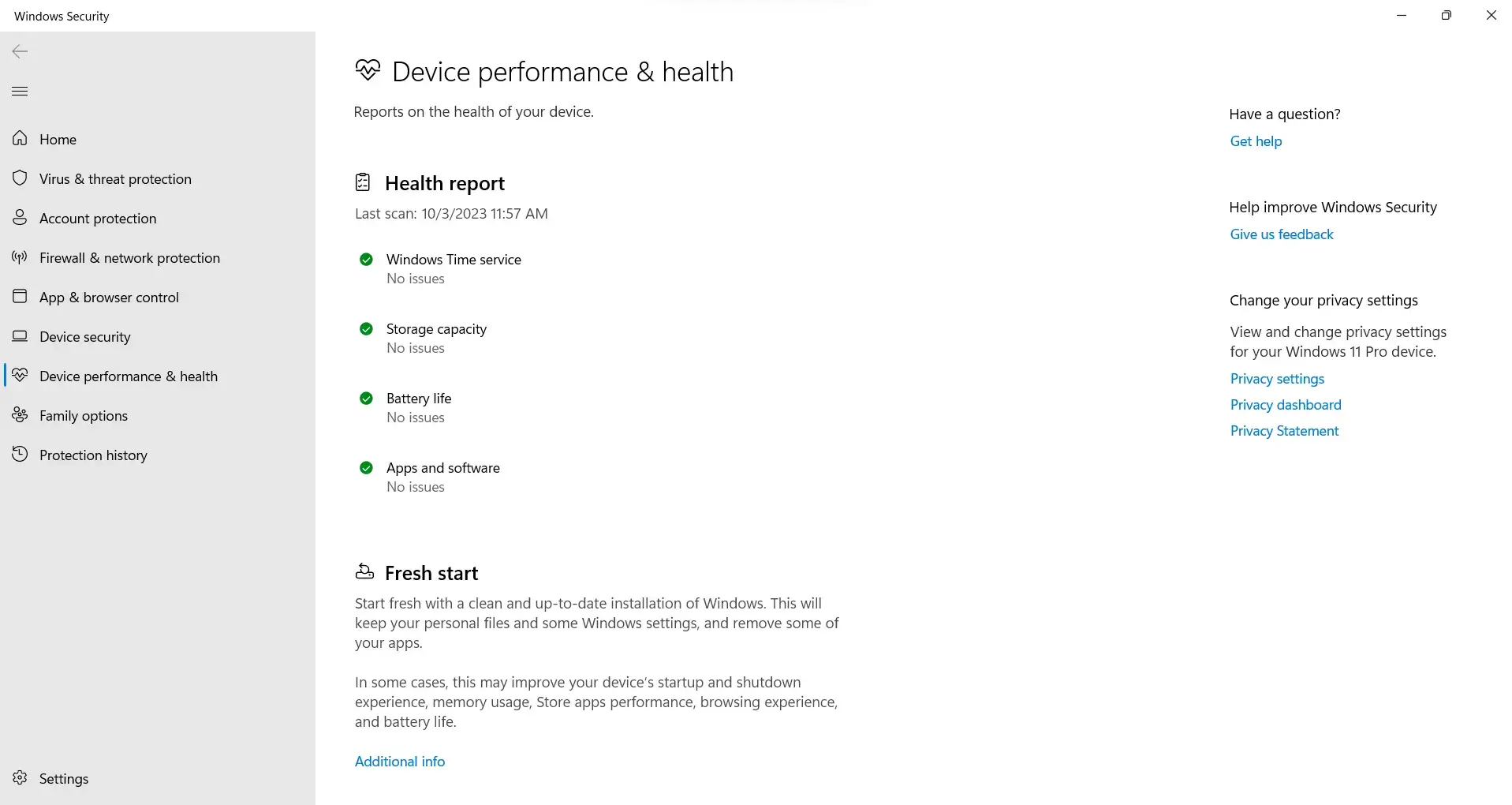In an era where remote work has reached great heights, the balance of convenience and flexibility it offers has become irresistible to many. The concept of earning within the comfort of your home seems like a dream come true.
However, this dream demands proper preparation, especially when it comes to setting up your laptop and creating a conducive work environment.
Today, we will offer you some invaluable tips to optimize your laptop and workspace for remote work. Whether you find yourself working from the comfort of your home or the charm of a distant locale, there are some essentials for creating a comfortable and functional workspace.
1. Optimize Your Internet Connectivity

A high-speed and reliable internet connection is the backbone of a seamless remote work experience. It allows you to collaborate, communicate, and complete tasks efficiently without the frustrating lag and interruptions.
Investing in a stable internet connection is investing in your productivity and peace of mind. With the right service provider and plan, you ensure a smoother, more enjoyable remote work experience, free from the stress of connectivity issues.
However, different tasks require different internet speeds, and understanding these requirements is crucial to avoid any hiccups during your workday.
For instance, if your role involves a lot of video editing, you will need a faster connection compared to someone whose primary task is researching. Developers, customer service representatives, and anyone attending frequent meetings and calls also have varying needs when it comes to internet speed.
Here is the breakdown of recommended internet speed for different tasks.
- Video Editing: Requires high upload and download speeds, ideally above 50 Mbps, to handle large files and avoid long upload/download times.
- Online Researching: A stable connection with speeds of around 10 to 25 Mbps is usually sufficient for browsing and reading online.
- Developing: Developers often need speeds of at least 20 to 50 Mbps to run code and use development tools efficiently.
- Customer Service: For clear VoIP calls and smooth access to customer data, speeds of around 25 Mbps are recommended.
- Meetings and Calls: To experience uninterrupted audio or video calls, a minimum of 10 Mbps download and 2 Mbps upload speed is recommended.
Once you have a clear understanding of your internet speed needs, explore the internet service providers and plans available in your area. It is essential to choose a plan that not only meets your speed requirements but also offers reliability and good value for your money. Consider the availability, cost, data limits, and customer service of each provider before making a decision.
2. Create an Ergonomic Workspace

When setting up your laptop for remote work, comfort is paramount. An ergonomic workspace is not just about avoiding discomfort but designing an environment that enhances productivity, focus, and well-being. Here is how you can achieve a setup that offers comfort with functionality.
- Choose an Ergonomic Desk and Chair
Optimum comfort is crucial when working from home, and it starts with selecting the right furniture. Avoid the temptation to work from your bed or sofa with your laptop on your lap because this can lead to poor posture and discomfort over time. Instead, invest in ergonomic chairs and desks designed to support your body and reduce strain.
These pieces of furniture help maintain proper posture while preventing aches and pains associated with prolonged sitting. A well-chosen desk and chair not only provide comfort but also create a professional vibe that boosts your focus and productivity.
- Organize Workspace for Maximum Productivity
A clutter-free, organized workspace is conducive to high productivity. Keep your work area free of unnecessary items and distractions. Have only essential items like a notepad and pen within arm’s reach, and consider storing other items in drawers or containers.
If your phone is not needed for work, keep it away from your workspace to avoid unnecessary interruptions. A tidy, streamlined workspace helps in maintaining focus and managing tasks efficiently.
- Optimize Lighting and Minimize Distractions
Good lighting reduces eye strain and fatigue and makes it easier to concentrate on tasks. Position your workspace to make the most of natural light and supplement with artificial lighting where needed.
Additionally, consider noise and other environmental factors when setting up your workspace. A quiet, well-lit area with minimal distractions is ideal for working from home with a clear head.
- Invest in High-Quality Docking Stations
A quality docking station is a valuable investment for remote work since it offers enhanced connectivity and convenience. It eliminates the hassle of dealing with connection issues, especially when multiple peripherals are required.
A docking station allows you to connect various devices to your laptop seamlessly. In this way, you can work efficiently without disruptions due to connectivity problems.
3. Invest in Essential Accessories and Peripherals

The right tools can significantly enhance your work-from-home experience and ensure that you can work efficiently, comfortably, and professionally. Below are some essential accessories that can elevate your remote work setup.
- Choose a High-Quality Webcam and Microphone
In the remote work environment, you may find yourself attending virtual meetings or giving online presentations frequently. A high-quality webcam and microphone are indispensable for such interactions.
Poor video and muffled audio can tarnish your professional image when communicating with clients or colleagues. Investing in good-quality devices ensures clear and effective communication and allows you to maintain a professional demeanor during virtual interactions.
- Choose Noise-Canceling Headphones
Comfortable and noise-canceling headphones are a boon for remote workers, especially those working in noisy environments. They allow you to focus on your tasks without being disturbed by surrounding noises.
Go for the headphones that are comfortable to wear for extended periods and don’t squish your head after prolonged use. Noise-canceling features help in creating a conducive work environment, even if you are surrounded by potential disruptions.
- Invest in Ergonomic Keyboard and Mouse
Whether you are working on a laptop or a desktop, having an ergonomic keyboard and mouse is essential. A mouse designed with grooves that fit your hand comfortably can prevent strain during long working hours.
Similarly, a well-designed keyboard can make typing more comfortable and reduce the risk of developing musculoskeletal problems. Choosing the right keyboard and mouse is crucial for maintaining comfort and productivity throughout the workday.
- Get the Right Additional Accessories
Beyond the basics, there are several additional accessories that can optimize your work-from-home setup. These could include a laptop stand to elevate your device to eye level and reduce your neck strain.
You can also add an external monitor for extended display and a quality surge protector to safeguard your equipment against power fluctuations. These accessories, along with proper cable management solutions, can help in creating a more organized and efficient workspace.
4. Enhance Remote Access and Troubleshooting

Remote work revolves around stable and seamless access to various software and applications that are crucial for performing tasks efficiently. Beyond a reliable internet connection, it is imperative to have easy access to all the software, applications, and CMS platforms that your company utilizes.
- Select a Compatible Operating System
Choosing an operating system that you are familiar with and comfortable with is very important. Before settling on an OS, make sure to determine the software and applications your company uses.
This ensures that your chosen OS is compatible with all the necessary tools and helps you understand which operating systems make using these tools easier. A compatible and user-friendly OS can significantly reduce the learning curve and allow for a smoother work experience.
- Utilize Remote Access for Troubleshooting
Remote access tools are invaluable for troubleshooting and installing software when working remotely. They allow IT support to access your system remotely to resolve any issues or install necessary software.
This results in reduced downtime and ensures that you can continue your work without significant interruptions. Efficient use of remote access tools is key to maintaining a stable and reliable work environment, especially when immediate in-person support is not available.
- Choose Services for Setting Up Your Computer
If setting up your remote workspace seems daunting, or if you are uncertain about the correctness of your setup, there are specialized services available to assist you. These services inquire about the nature of your work and help establish the most suitable system for you so you don’t invest in unnecessary equipment.
They not only help in configuring your workspace appropriately but also provide ongoing support, troubleshooting, and resolving any technical issues promptly. Opting for such services can be a great choice since they offer you peace of mind and support throughout your remote work journey.
5. Inventory Management and Device Maintenance

As a remote worker, you must have the proper knowledge of device management since you won’t have IT professionals readily available to assist with minor or major inconveniences. This will let you manage and maintain your devices independently for a secure work experience.
- Manage Your Laptop Inventory
Managing your laptop inventory effectively and utilizing dashboard tools can make this task much simpler. For example, you can use a simple spreadsheet or a dedicated app to keep track of your laptop’s software, applications, and any peripheral devices, noting their status, updates, and any issues you encounter.
This practical approach helps in maintaining an organized inventory and allows for quick resolutions when problems arise. As a result, you always remain optimal for your work needs.
- Use Management Software
The importance of using management software is often overlooked, which leads many to face avoidable challenges later on. Therefore, you must use management software to regulate the maintenance, storage, and security of laptops when working from home.
These software solutions help in scheduling regular maintenance, managing storage efficiently, and ensuring the security of your device. In this way, all the sensitive data on your system stays protected from potential threats. Regular use of management software can also help you maintain the overall health of your laptop.
6. Legal and Ethical Considerations
You must be aware of and adhere to legal and ethical considerations because they are important to maintain a balanced and harmonious working relationship between employers and employees. It ensures that both parties’ rights and responsibilities are respected and upheld.
- Understand the Legalities of Monitoring Devices
As a remote employee, it is important to understand the legalities surrounding the monitoring of devices. Employers may have policies in place to monitor devices for security and productivity reasons, but it is essential that such monitoring adheres to legal standards and respects employee privacy.
Familiarize yourself with your company’s policies and ensure that any monitoring is transparent, justified, and within legal bounds.
- Balance Employee Privacy with Company Security Needs
While employers have a right to secure their data and intellectual property, employees also have a right to privacy. A balance between monitoring and employee privacy with the security needs of the company is crucial.
You must know and respect the boundaries set by your employer regarding access to company data and usage of company devices while also making sure that your privacy is not infringed upon. Open communication with your employer about privacy and security policies can help in maintaining a balanced and trusting relationship.
- Concerns Regarding Personal Use of Work Computers
Remember, some employers have strict policies about using work devices for personal tasks, and violating these policies can lead to repercussions. Be clear about your employer’s stance on personal use and adhere to the guidelines provided. If the policies are unclear, seek clarification to avoid any misunderstandings.
- Explore Employer Responsibilities in Covering Internet Costs
Many employers offer reimbursements or allowances for internet costs incurred while working remotely, while others may not. Clarify with your employer about any provisions or compensations available for internet costs, and be informed about your rights and entitlements in this regard.
Ending Words
In today’s digital age, where flexibility and adaptability are key. Setting up your laptop for remote work is not just about convenience but about crafting a professional, secure, and productive workspace, irrespective of where you choose to work. So, follow our guide and create the most comfortable and productive work environment.
Nowadays, many of us are working from home. Having a good setup is super important. Clear communication, especially through Zoom, is key. Picking the right laptop for smooth Zoom meetings is crucial. To find out more, read our guide on the Best Laptops for Zoom Meetings in 2023.

